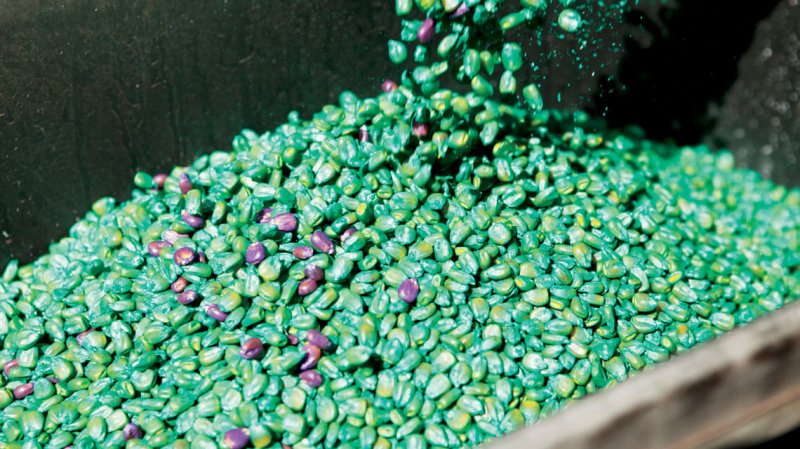A study by Purdue entomologist Christian Krupke [May 2017] was the latest to conclude that honeybees are widely exposed to neonic-tainted dust during corn planting. It joins a growing body of research, which shows that talc and graphite seed lubricants can “dust off” the seed during planting and carry coated insecticides with them.
…
Most of the companies noted that the EPA, in recent neonicotinoid risk assessments, found that seed treatments pose a low risk to pollinators. However, to date, the EPA is not yet using dust-off exposure and risk data in their assessments of neonicotinoids.
…
These new products and formulations will likely lower the high levels of exposure found in Krupke’s study, and others, but more remains to be done, [Iowa State University entomologist Joel] Coats said.
…
Over the years, academic research has built a case that soybean neonicotinoid seed treatments do not provide consistent yield responses in the Midwest, but the research is thinner on the corn side. Krupke’s study staked out new territory by noting that Purdue’s corn trials from 2012 to 2014 did not show any significant yield benefits.
Representatives from Syngenta and Bayer criticized the small scale of the corn trials in Krupke’s study, which they said were not representative of American corn acreage on average. Along with Pioneer, they cited a series of 2015 studies commissioned by the industry from a private research company called AgInfomatics.
The study included a meta-analysis of published peer-reviewed studies, replicated field trials from neonicotinoid registrants, and studies from the Arthropod Management Tests, a publication for routine screening tests of insecticides. It found an average yield benefit of nearly 18% for corn treated with neonicotinoids.
The GLP aggregated and excerpted this blog/article to reflect the diversity of news, opinion, and analysis. Read full, original post: Dodging Dust































